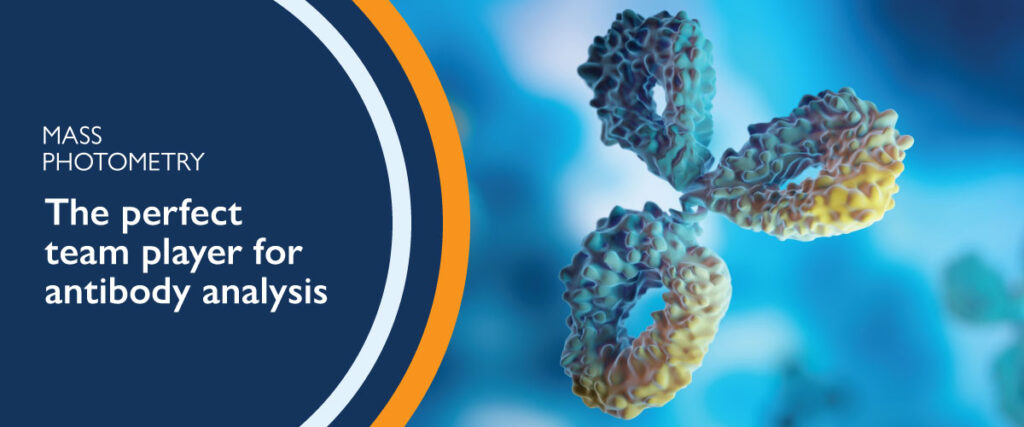
Antibodies are powerful therapeutics used to treat a range of diseases, which is being expanded thanks to the development of new engineered formats like bispecifics. However, developing new antibodies comes with significant analytical challenges:
Current widely used techniques struggle with these analytical challenges. Techniques like SEC or AUC are informative, but they consume large amounts of sample that – particularly in the early stages of antibody development – can be precious. In addition, they work at high (µM) sample concentrations, far from the physiological conditions in which antibodies are meant to work.
Other techniques like SPR and BLI are helpful for binding analyses, but they are bulk techniques that measure the average binding affinities of all species present in the sample. Often relying on the assumption that the antibody-antigen binding stoichiometry is 1:1, they struggle to characterize multicomponent systems like bispecific antibodies.
Mass photometry is a powerful technique that provides an overview of all the components in a sample at the single-particle level, in a matter of minutes and using only nanograms of sample. Moreover, mass photometry measures take place in solution and at nanomolar concentration, closer to physiological conditions.
These strengths make mass photometry ideal to screen valuable antibody and antigen samples for purity, oligomerization behavior and complex formation. Mass photometry can also characterize antibody binding, provide an overview of antibody-antigen assemblies with multiple stoichiometries and quantify separate binding affinities for each complex in multicomponent systems.
In short, the fast, informative measurements of mass photometry can help you assess the quality of your samples and inform the results of other analytical techniques while saving time, sample and operating costs. Below, you can see two use cases for the technique:
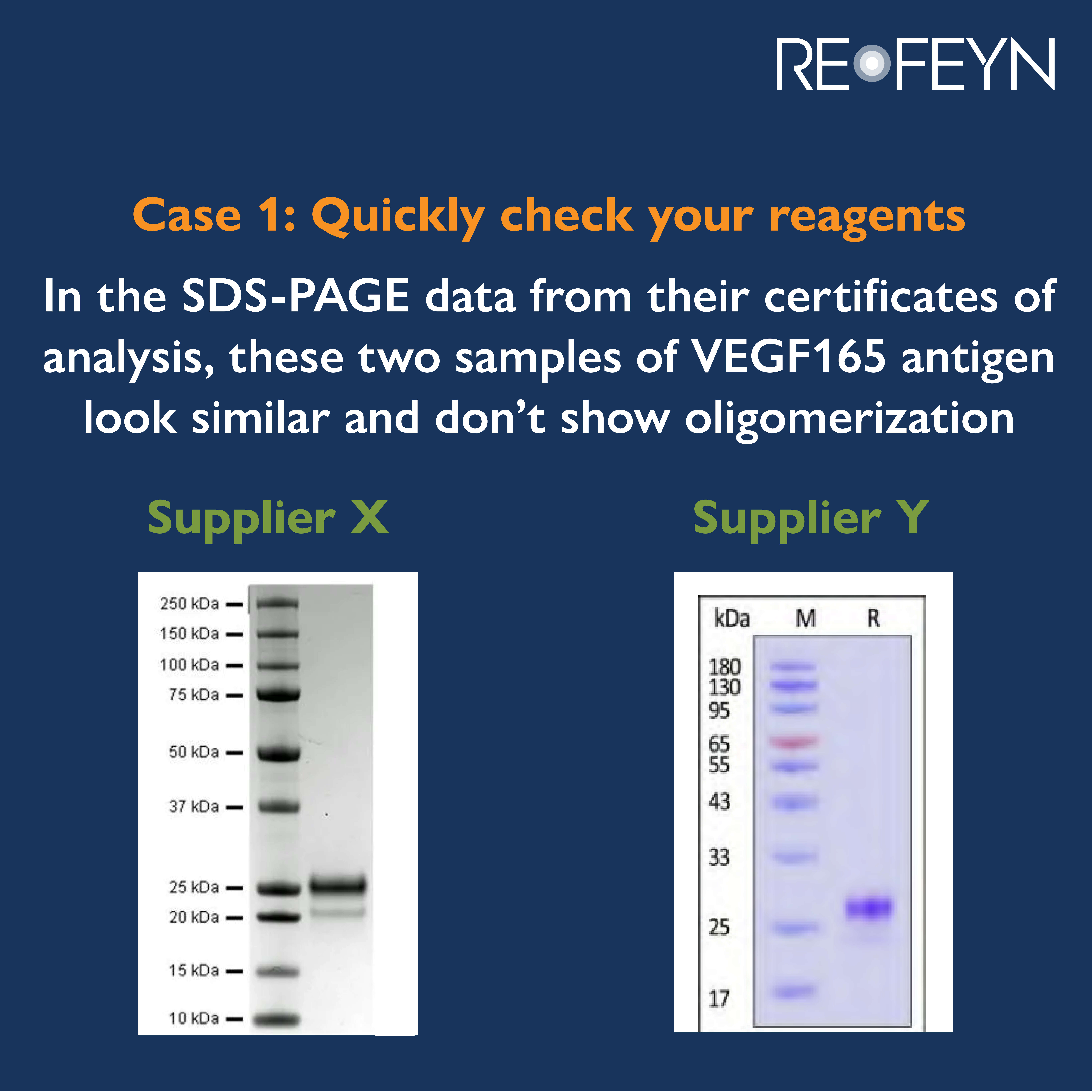
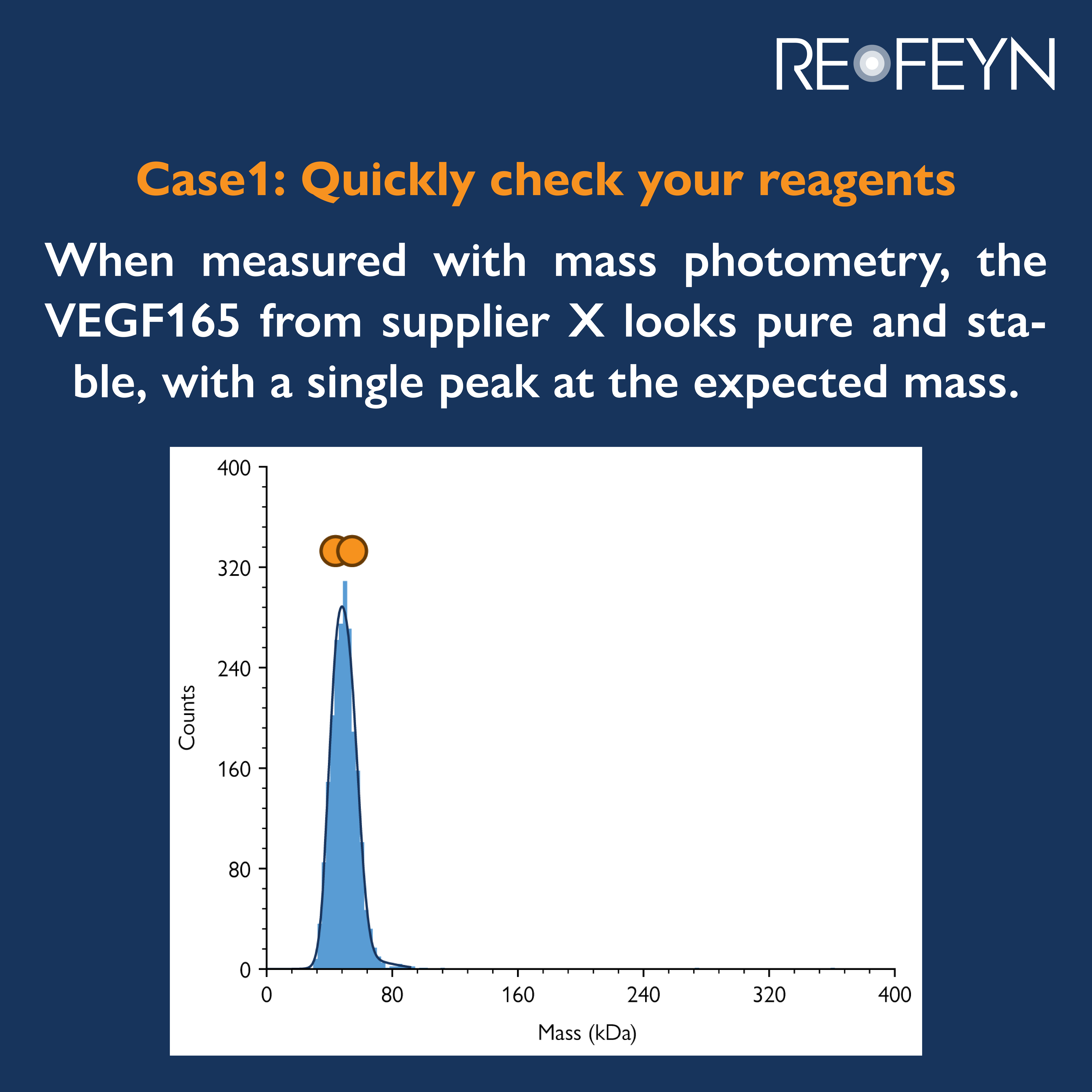
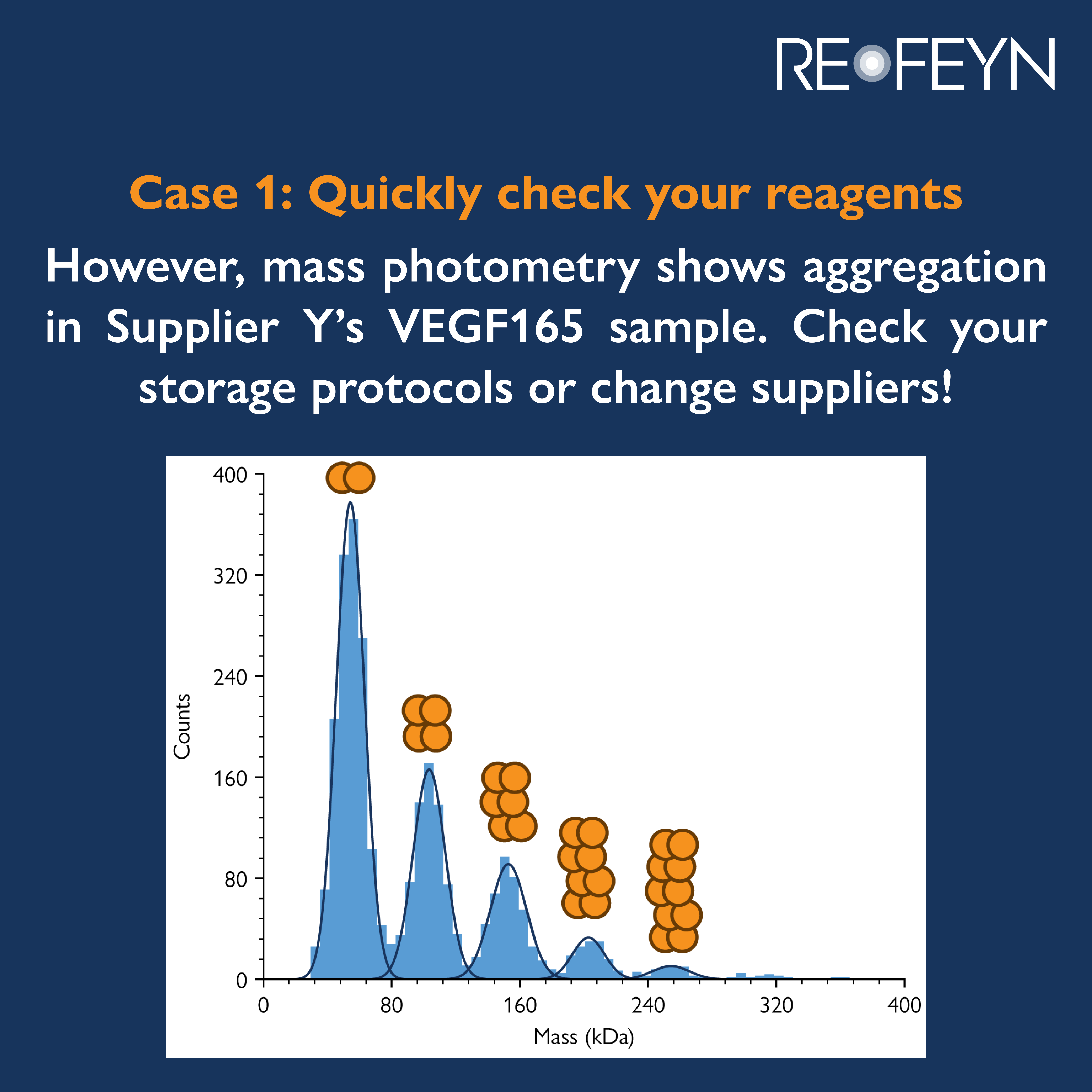
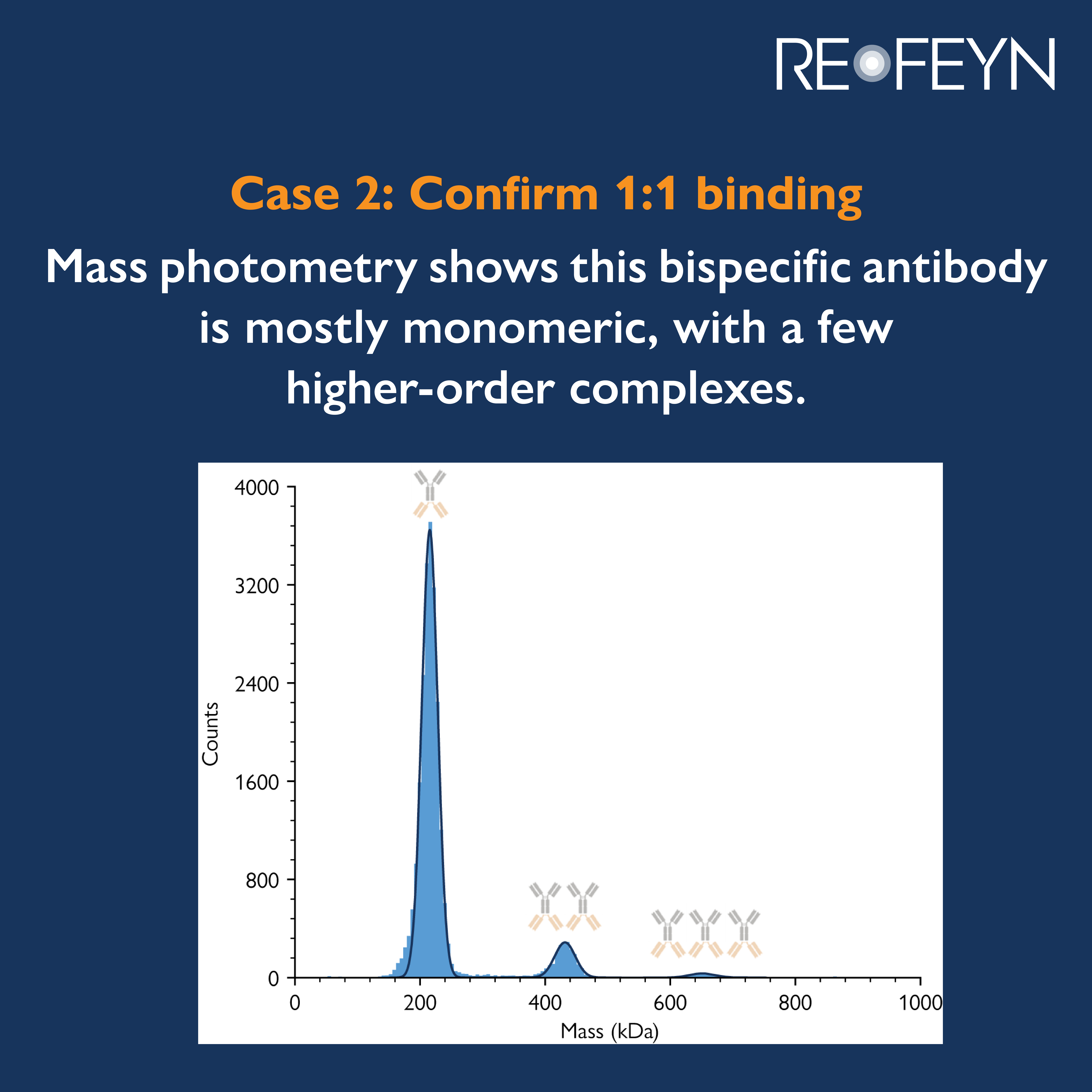
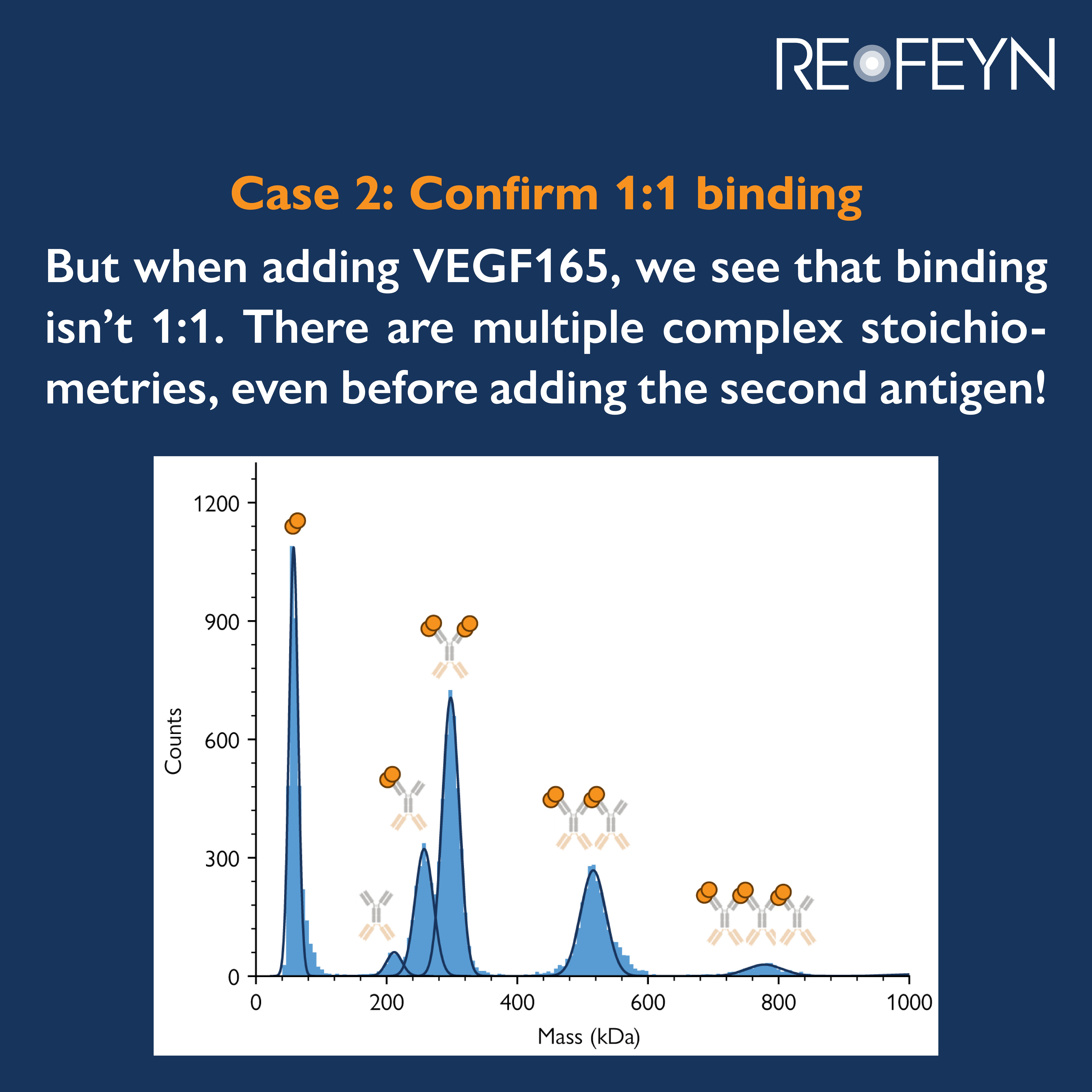
If you are interested in using mass photometry to support your antibody development, don’t hesitate to get in touch at orders@refeyn.com!
If you want to learn more, check out these other resources: